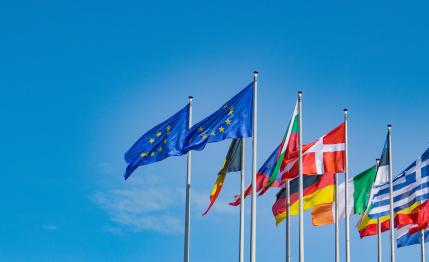
At the European Council meeting on 23 October 2014, EU leaders agreed to reduce greenhouse gas emissions by at least 40% by 2030, compared to 1990 levels. This target is to be broken down to the member state level, based on GDP per capita. The European Council reserved the right to review these targets following the UN climate change summit in Paris 2015. In order to reach the 40% target, sectors covered by the European emissions trading scheme (EU ETS) will have to reduce their emissions by 43% compared to 2005 levels, whereas non-ETS sectors will have to reduce emissions by 30%.
The 2030 framework calls for a reformed EU ETS with a market stability reserve to balance supply and demand. Although the text states that the reforms should be in line with the European Commission’s proposal published earlier this year, the precise details are yet to be agreed upon. EU leaders also agreed that the annual linear reduction factor for the EU ETS cap should increase to 2.2% after 2020, up from 1.7% previously.
The conclusions of the EU Council also contain some prescriptions for the EU ETS post-2020, to be further elaborated in subsequent legislation. Many details relate to the future allocation of allowances. The agreement stipulates that poorer member states, whose GDP is less than 60% of the EU average, can continue to give the power sector free allowances under the EU ETS up to 2030. The maximum amount of free allocation after 2020 cannot exceed 40% of the allowances allocated for auctioning to the member states using this option. Such permits should be used to promote real investments modernizing the energy sector.
To address carbon leakage concerns and protect sectors at risk of losing international competitiveness, free allocation will continue until major economies outside Europe adopt comparable climate policy efforts. The benchmarks will be regularly reviewed in line with technology development and there should be a better alignment of allocation with changing production levels. Both direct and indirect carbon costs will be considered. The agreement states that the most efficient installations should not bear any “undue” carbon cost and that incentives to innovate will be fully preserved.
Two funds will be established – NER 400 fund to promote low-carbon innovation and a fund for the modernization of the energy sector in low income member states. Moreover, 10% of EU ETS allowances auctioned by member states will be distributed among countries whose GDP per capita does not exceed 90% of the EU average.
Member states will have the option to voluntarily include the transport sector within the ETS framework. Countries with relatively ambitious national reduction targets or those who did not have free allocation for industrial installations in 2013 can also use their ETS allowances to meet emission reduction goals in non-ETS sectors.
Heads of State and Government also agreed on an EU-wide binding target of 27% for renewable energy and a 27% EU-wide indicative target for energy efficiency by 2030. Additionally, the agreement sets a target of at least 10% of existing electricity interconnections by 2020, with the objective of arriving at 15% by 2030. The priority will be given to the Member States with low level of integration in the internal energy market, i.e. Baltic States, Portugal and Spain.

